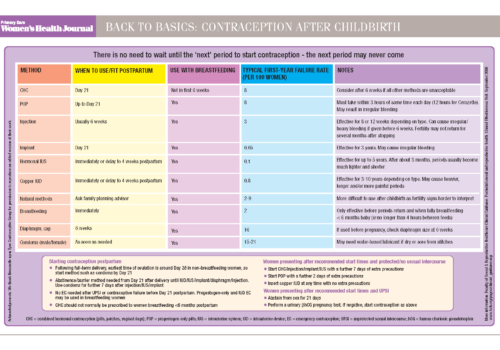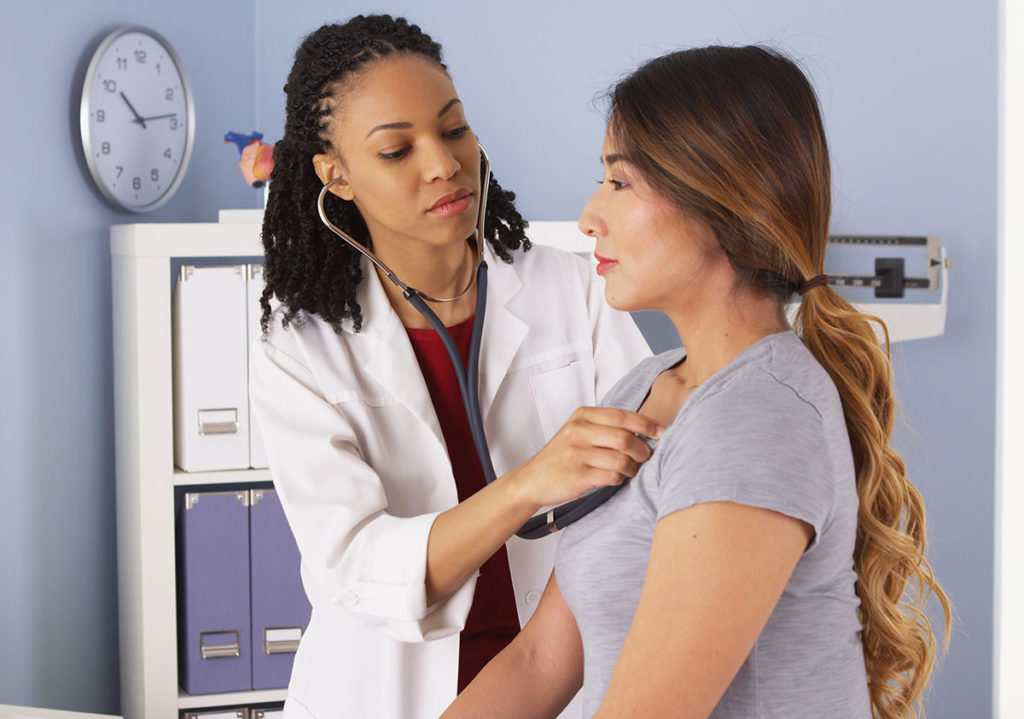


This resource is fully searchable using the search box at the top of the page, or to narrow down your selection using filters click on 'Knowledge hub' in the main navigation.


This resource provides access to informative articles on the broad spectrum of obstetric and gynaecological issues managed in primary care including sexual and reproductive health.
These materials cover some of the most important topics in daily care including:
![]() Contraception across different age groups
Contraception across different age groups
![]() Early detection of gynaecological cancers
Early detection of gynaecological cancers
![]() Pre-menstrual syndromes
Pre-menstrual syndromes
![]() Use of testosterone
Use of testosterone
![]() Menstruation and abnormal uterine bleeding
Menstruation and abnormal uterine bleeding
![]() Fertility treatment
Fertility treatment
and much more.
Recent changes in the perception of osteoporosis and fracture risk have placed their management firmly within primary care. The inclusion of osteoporosis in the Quality and Outcomes Framework (QOF) supports this change and acknowledges the important role of GPs and practice nurses. A new online resource aims to help primary care in taking this opportunity to improve patient care and achieve QOF domains.
Primary care is usually the first point of contact when a woman presents with postmenopausal bleeding (PMB). Prompt referral is essential, since bleeding may be a sign of endometrial cancer. But it is also important for GPs and practice nurses to explain to the patient the reasons for concern, as well as the purpose of the investigations that she is likely to encounter in secondary care.
As we watch our young female athletes compete in the Olympics, we hope that their legacy will be increasing participation in sports and exercise by all women. The positive effects of exercise are well known, and a sedentary lifestyle can reduce bone mineral density and increase the risk of postmenopausal osteoporosis. But for the young female performer, high volumes of exercise may paradoxically be linked to the loss of oestrogen and higher risk of stress fracture and osteoporosis associated with the female athlete triad.
The vulva is the area of skin just outside the vagina. Most women have a slight vulval itch from time to time, but pruritus vulvae means that the itch is persistent and is often worse at night. Pruritus vulvae affects about one in 10 women at some time in their lives.

Over the last 30 years, there has been a trend towards lower parity, older mothers, and a significant rise in the incidence of multiple pregnancies, both spontaneous and induced by assisted reproductive technologies (ART). These developments mean that women receive contradictory information on age-related effects on their ability to conceive. Primary healthcare professionals can play a key role in enabling women to make realistic and informed choices about the risks of deferring childbirth.

Nausea and vomiting in pregnancy (NVP) are regarded as a ‘normal’ phenomenon of early pregnancy, and so their impact is under-appreciated and under-researched. The condition can, however, be so serious that women need admission for fluid replacement. GPs and practice nurses looking after women with NVP need to be aware of its potential severity and be willing to offer safe and effective therapy.
Last time I shared my thoughts with you, I was eagerly anticipating the Department of Health’s sexual health policy document for England. Indeed, since publication was promised for spring 2012, I was worried that my comments might be overtaken by events. But the policy will now appear some time this summer, and I am concerned that the resulting delay and uncertainty mean that there may be little time to ensure that we maintain standards of local contraception and sexual health services.
Chronic pelvic pain presents in general practice at the same rate as asthma and back pain, and is one of the most common reasons for referral to a gynaecologist. Since chronic pelvic pain is a symptom rather than a diagnosis, a thorough history and examination are essential to avoid a sometimes vicious cycle of referrals or investigations that only cause further anxiety for the patient.
Increased use of intrauterine contraceptives (IUCs) and implants for regular contraception could significantly reduce the incidence of unintended pregnancy. It has, however, proved challenging to promote use of these long-acting reversible contraceptives (LARCs) in clinical practice. This article explains how lessons from a successful project in the USA are being used to encourage the uptake of LARCs among women in Hull.
A unique new e-platform for primary care

For healthcare professionals in countries with applicable health authority product registrations. The content may not be approved for use in your specific region or country. Please review the applicable product labelling for your country for indications and instructions prior to use. If not approved, please exit this site.
We use cookies to ensure that we give you the best experience on our website.
By continuing to this site you are confirming that you are a healthcare professional and are opting into the use of cookies.
Yes, proceed to the site


















